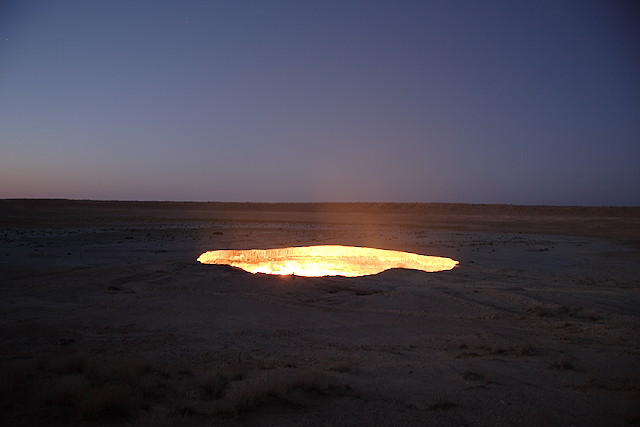Eternal Flame Pit

Locals call it “The Door to Hell.” The name does it justice. The picture, above, does not. (More pictures? Here. Satellite image? Here, via Google Maps.)
The village of Darvaza, Turkmenistan is located in the Karakum Desert and has a population in the 300 to 1,500 range — mostly members of a semi-nomadic tribe called the Teke. It is an otherwise non-descript part of the world, with one exception: it has a lot of natural gas. So much, in fact, that in 1971, a team of geologists traveled to Darvaza in hopes of capturing some of this valuable natural resource.
But their expedition did not go to plan. The cavern of natural gas below the rig was larger than anticipated, and the rig collapsed within it. With all the gas now escaping, the geologists decided to light it on fire. (This isn’t a ridiculous decision. The best outcome, of course, would be to capture and collect the resource. But that not being an option, allowing the toxic gas to escape into the atmosphere was a very bad outcome. Burning it is likely an ecologically superior alternative.)
The team expected the flame to burn for a few days, perhaps a week. They were wrong. Nearly four decades later, this pit of fire still rages, with no clearly articulated plan to close it.
Bonus fact: Eternal Flame Falls, at Shale Creek Park in upstate New York, has a natural gas phenomenon of its own. Underneath a waterfall there’s a small cave which emits enough natural gas to maintain a stand-alone flame for a few minutes (depending on wind conditions and water flow levels), leading to pictures of fire burning as a waterfall cascades above.
From the Archives: Underground Coal Fires: Similar, in that they’re raging uncontrollably. Different, in that they’re burning coal — and are in China and Pennsylvania.
Related: A banknote from Turkmenistan.

Leave a comment